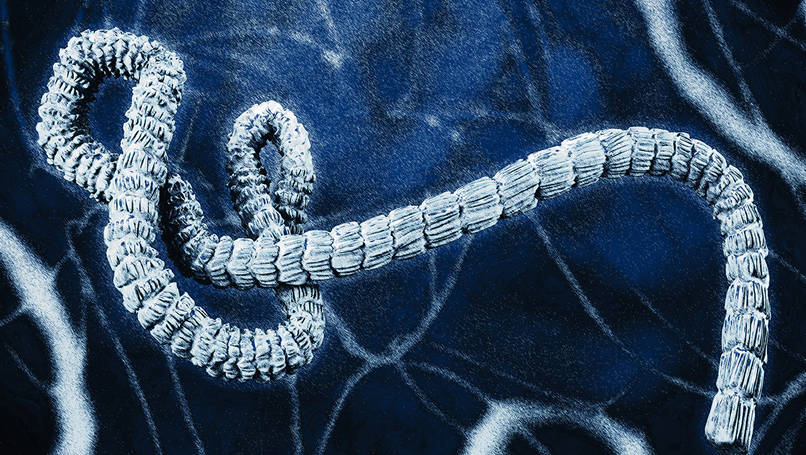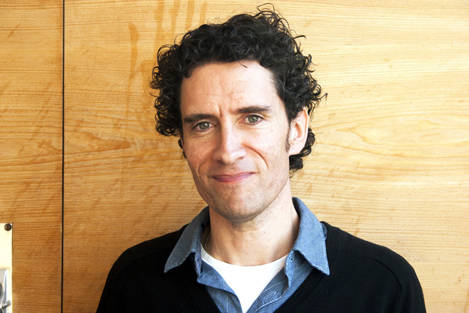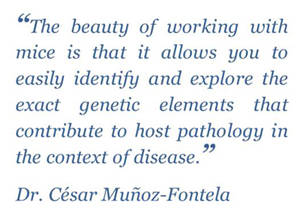An Update: Trends in Ebola Research

Although it has been over a year since the Ebola virus (EBOV) outbreak in West Africa, many survivors are still suffering from chronic virus infection as well as from the devastation of having watched loved ones succumb to disease. In addition, the World Health Organization is coordinating the collection and storage of up to 100,000 samples of blood, semen, urine, and breast milk from Ebola patients. This biobank will give scientists and physicians access to critical resources that are necessary to broaden our understanding of this illness. In light of the devastation many individuals have faced from both the lack of information and treatment options for those infected, it is increasingly apparent that more research is needed to better understand the fundamentals of Ebola viral pathology to be better prepared for future outbreaks.

Dr. César Muñoz-Fontela is the leader of the Emerging Viruses research group at Heinrich Pette Institute in Hamburg, Germany, whose laboratory is focused on investigating the immunology of viral hemorrhagic fevers, including Ebola and Lassa fever. His recent publication in The Journal of Virology is the first to demonstrate the infection of non-adapted Ebola virus in mice, using humanized NSG™-A2 (NOD.Cg-Prkdcscid Il2rgtm1Wjl Tg(HLA-A2.1)1Enge/SzJ (009617)) mice engrafted with human CD34+ hematopoietic stem cells. To follow up our previous interview with Ebola expert Dr. Steven Bradfute, we were interested in hearing Dr. Muñoz-Fontela’s perspective about how mouse models are contributing to the diagnosis and treatment of diseases affecting humans right now.
JAX: Why use animal models to investigate EBOV pathology, and more specifically humanized mouse models?
Muñoz-Fontela: We work on the physiology of immune responses to Ebola virus and other hemorrhagic fever viruses, as this is an area that is poorly understood. The major hurdle to working with viral immune physiology is that the model being used must be immunocompetent and support infection. Non-human primates (that are immunocompetent) have been used in the past, but there is still a lack of reagents, as well as ethical and economic constraints, to do endpoint studies. The beauty of working with mice is that it allows you to easily identify and explore the exact genetic elements that contribute to host pathology in the context of disease. For our experiments, we decided to test whether mouse models that carry functional human immune cell populations would be a suitable model for Ebola virus infection. I have followed the work of The Jackson Laboratory's Professor Lenny Shultz in the development of different immunodeficient mouse strains, so we decided to try the NSG™-A2 model. Our publication is the first description of how a humanized mouse model responds to Ebola infection.
JAX: Why did you decide to humanize the NSG-A2 strain for your studies?
Muñoz-Fontela: We decided to study human immunity during Ebola virus infection in humanized NSG™-A2 mice because enhanced [human] CD8+ T cell responses to viral infection [in this model] have been demonstrated in the literature. Since we are interested in studying the mechanisms of dendritic cell and T cell interactions and how this relates to Ebola virus pathology, we thought this would be a good model to start with. In our initial experiments, we wanted to establish a model that supports [non-mouse-adapted] Ebola virus infection that replicates classic characteristics of infection in humans. Now that we’ve achieved this, our aim is to interrogate the roles that different immune cell populations play in the pathology of this disease.

JAX: What are some of the advantages of using humanized mouse models for Ebola virus over inbred strains?
Muñoz-Fontela: In the past we and others have used immunodeficient mice and mouse-adapted Ebola virus to make conclusions about pathophysiology. This has led to dogmas in our field such as that innate immune cells (mainly macrophages and dendritic cells) are necessary for the initial establishment of infection and [for] viral dissemination into peripheral organs. Our goal is to test this and other hypotheses related to the immune response to Ebola virus in a more immunocompetent in vivo system. Hopefully this model will also make it easier to study human immune responses to infection and to compare findings with those in humans.
Interestingly, when we infected non-humanized NSG-A2 mice with Ebola virus , the mice were susceptible to a chronic infection similarly to previous studies with Marburg virus by the group of Sina Bavari at USAMRIID. This is in contrast to NSG™-A2 mice engrafted with mouse immune systems, which were able to clear infection in a way that may be similar to inbred strains not susceptible to non-adapted Ebola virus infection. The non-humanized NSG™-A2 strain presents a new platform that may potentially be used to model the long-term viral persistence currently seen in survivors of Ebola virus infection that can lead to eye inflammation, joint pain, and possible sexual transmission.
JAX: What are the differences between mouse-adapted and non-adapted Ebola virus strains?
Muñoz-Fontela: Although we haven’t performed any experiments with the mouse-adapted virus in NSG™ mice, in general, there are several mutations that have been acquired in the mouse-adapted version of the virus [that] allow mice to become susceptible to infection. As shown previously by the group of Yoshi Kawaoka, some of these mutations are in proteins that are very important and relevant for viral pathogenesis and fitness, including the nucleoprotein (NP) and VP35. We also were really interested in using the non-adapted virus because this gives us a lot of freedom to use current clinical isolates, learn more about their pathogenesis, compare different isolates, and develop better diagnostic tools and treatment strategies. These types of comparisons could not be performed using mouse-adapted virus.
JAX: What is the potential for using other humanized mouse models for Ebola research in the future?
Muñoz-Fontela: Our laboratory is interested in investigating the interaction of dendritic cells and T cell interactions during Ebola virus infection to better understand where and how antigen-specific immunity really begins. For us, it is important that the model we use not only supports infection, but also supports the development of functional immune cell populations. We have described the CD34+ [humanized NSG™-A2] model and have demonstrated lymphocytic infiltration into peripheral tissue, and we are currently characterizing the PBMC model that contains more mature immune cell populations. Another approach that may be useful in the future is adoptive transfer of T cells from donors already exposed to antigen to validate in vitro data.
As Dr. Muñoz-Fontela indicates, it has been difficult to study Ebola due to its narrow host specificity. Mice that support Ebola virus infection and display characteristics of infection observed in humans undoubtedly will serve as a preclinical platform for developing new treatments. The publication from the Muñoz-Fontela laboratory marks the beginning of a new chapter in better understanding the pathology of this disease.